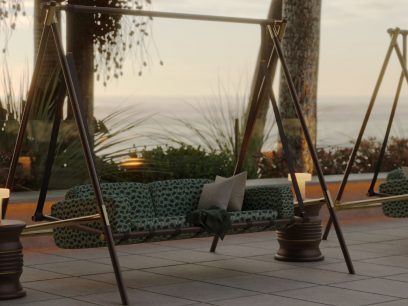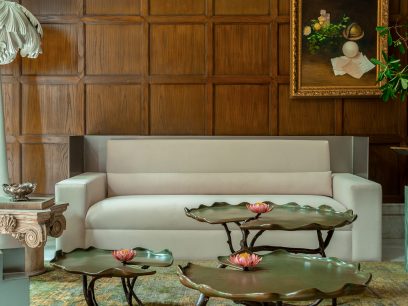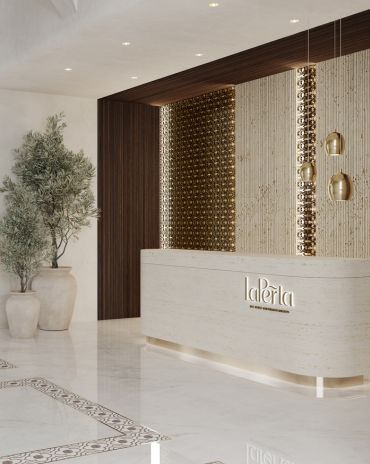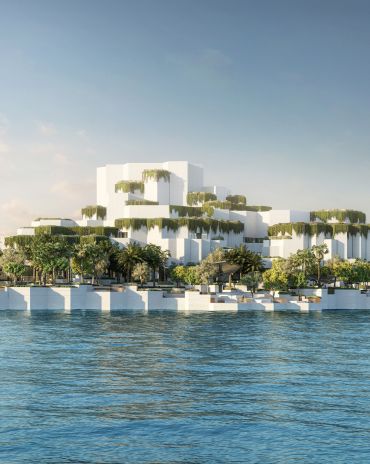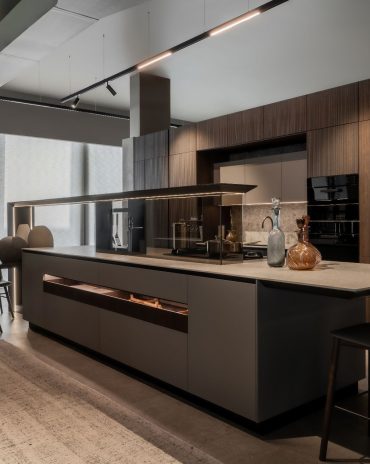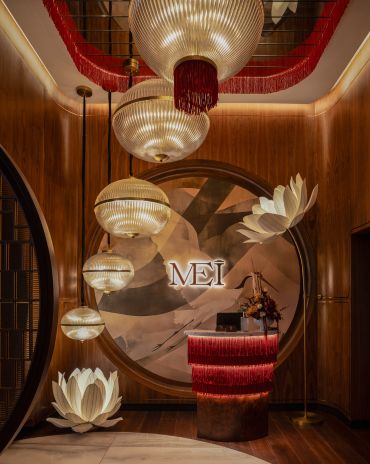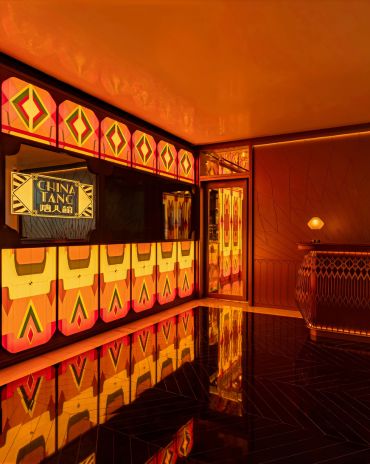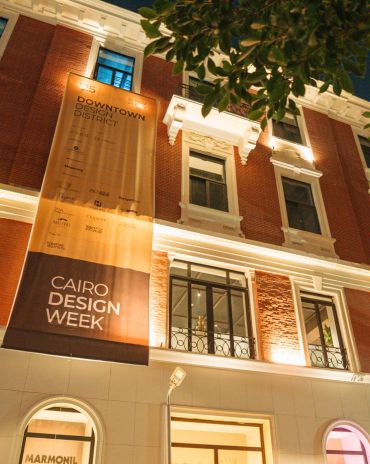Copyright © 2025 Motivate Media Group. All rights reserved.
AB+AC designs emotive cultural centre dedicated to healing through the arts
Located in Lisbon, the interiors feature serene and minimal spaces

Located on the ground floor of a 19th-century building in a narrow alley within Lisbon’s historic neighbourhood of Barrio Alto is an experiential cultural centre designed by AB+AC, dedicated to promoting self-healing through the arts, as well as conscious gathering, holistic learning and co-creation. The project takes inspiration from the sacred concept of shala (a Sanskrit word meaning ‘home’), where people commonly gather to practice yoga, learn and focus on inner growth.
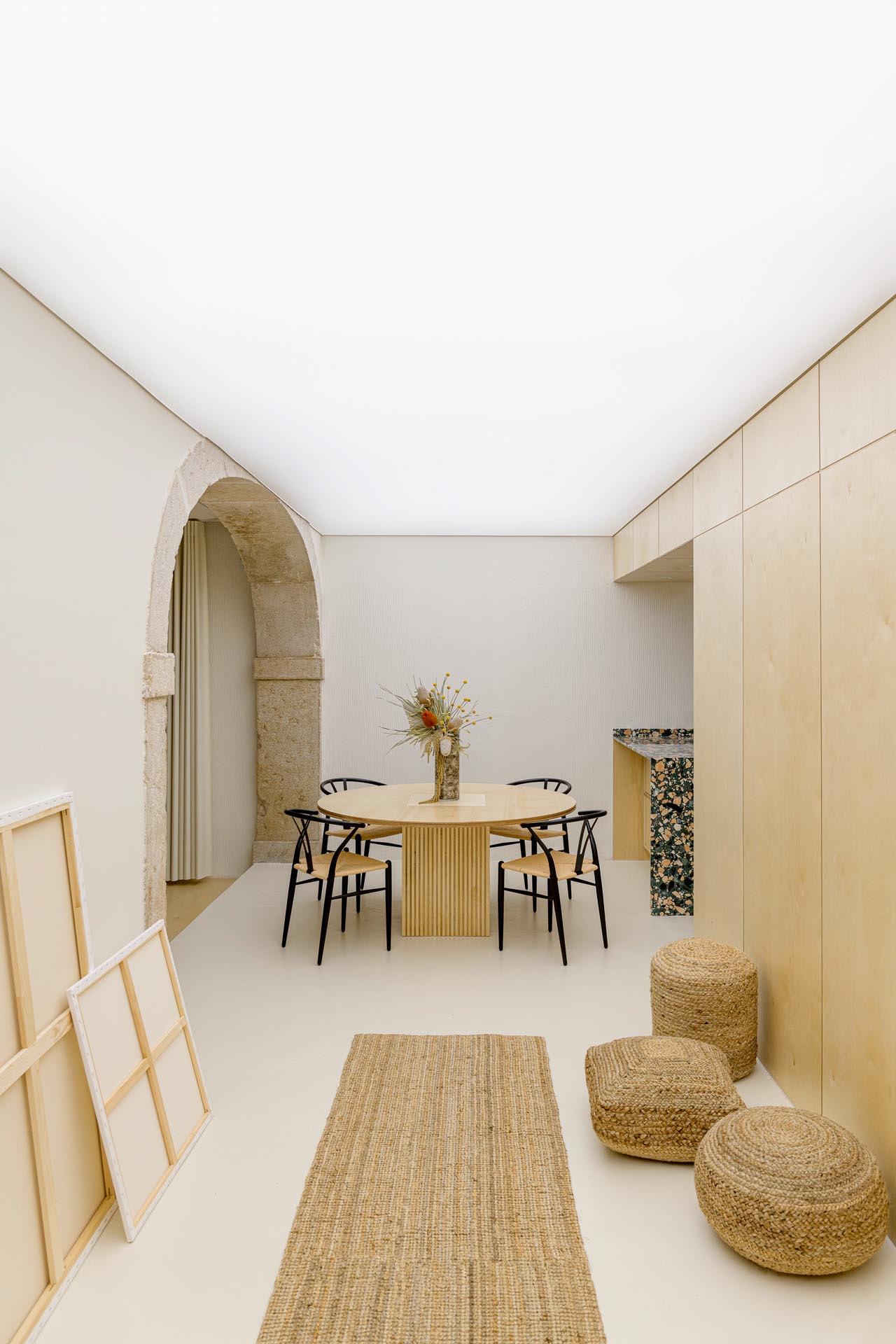
Photography by Ricardo Oliveira Alves
The American non-profit organisation Open Hearts entrusted the young architectural practice AB+AC Architects to deliver a design that encapsulates the values of the space, and they couldn’t have made a better choice. The young studio is run by architects Arianna Bavuso and Andre Chedid – the latter of who, in addition to being involved in several renovation projects in Beirut, is also the co-founder of acclaimed rock band, Mashrou’Leila. The duo hold a strong belief in the emotive power of architecture. “Our intention is really to provoke a reaction through our architecture, and this is how we approached the design of each of the rooms in this cultural space; we tried to give it a soul and a unique character,” Bavuso says.
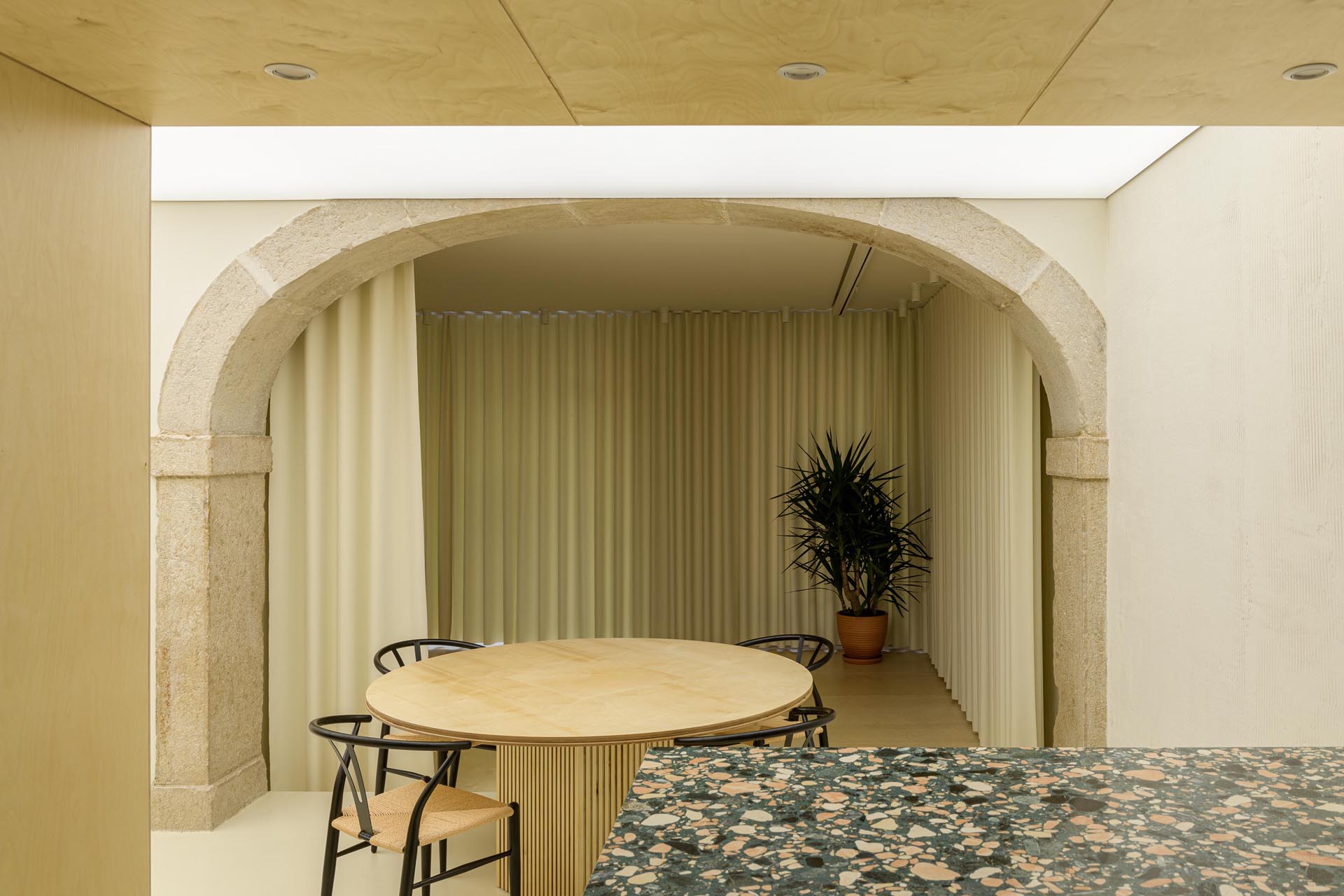
The main challenge was to turn the dark and commercial unit into an open space with light. “From a spatial point of view, our design had to work around two main constraints: the scarcity of natural light during certain hours of the day, and the need to preserve the existing street front elevation with its windows,” Bavuso explains. Eventually, the architects created a layout featuring a sequence of rooms that flows from a public experience with proximity to the street, including a multi-purpose salon, to a convivial zone where the open kitchen extends up to the stairs into an intimate patio with tropical plants and volcanic stone pebbles. In between the public and private areas is the lounge, which is a long and narrow space with a lighting system that offers a diffused glow – stretching over eight metres – and creates an ideal environment for art gatherings and exhibitions.
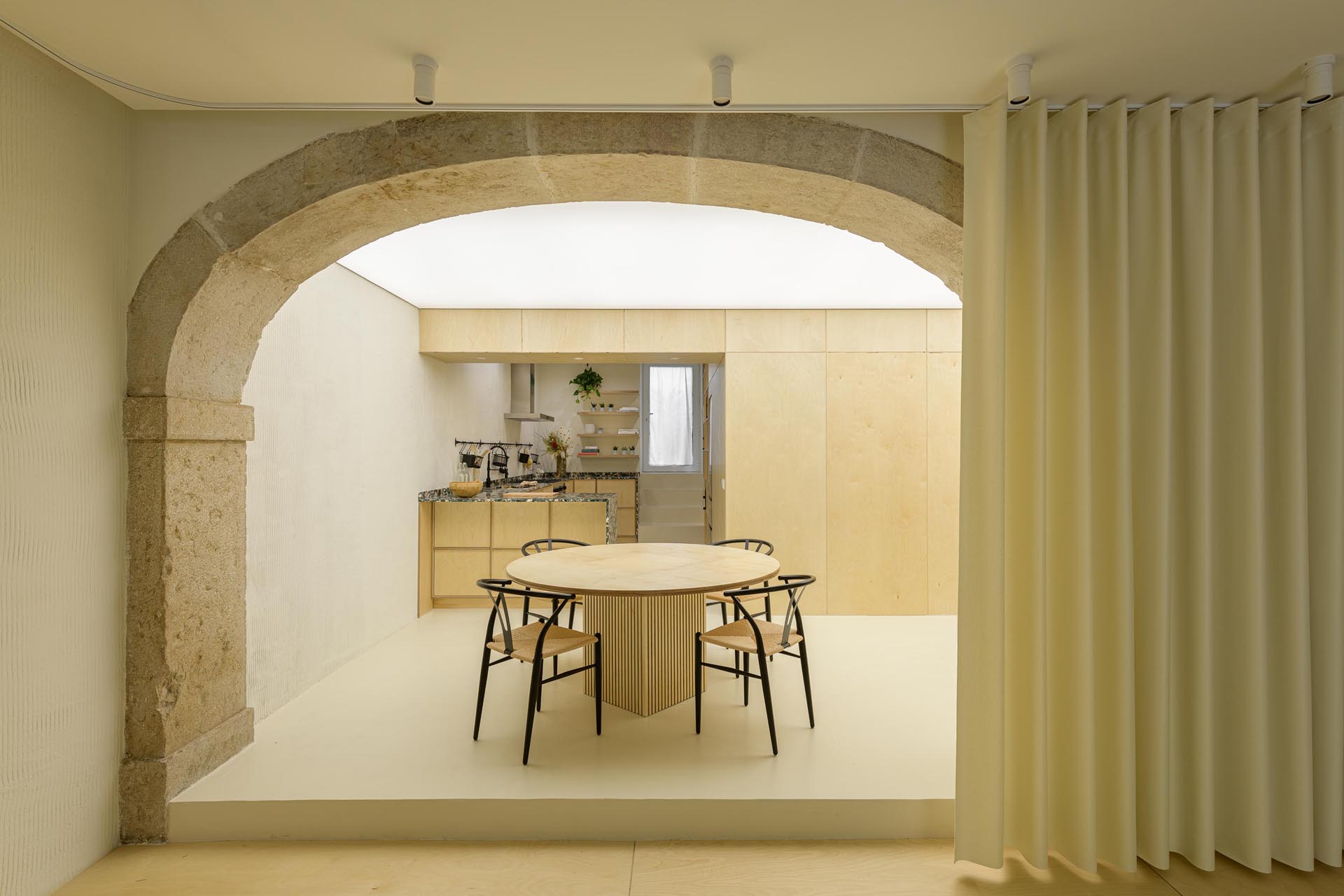
To accentuate the open plan and continuous circulation of spaces, the architects emphasised the thresholds, maintaining the limestone arch of the historical building which is now in dialogue with a more contemporary and geometric portal clad in birch wood. Camouflaged among these panels is the access to a one-bedroom residency for any artist who wishes to produce and share their work with the community.
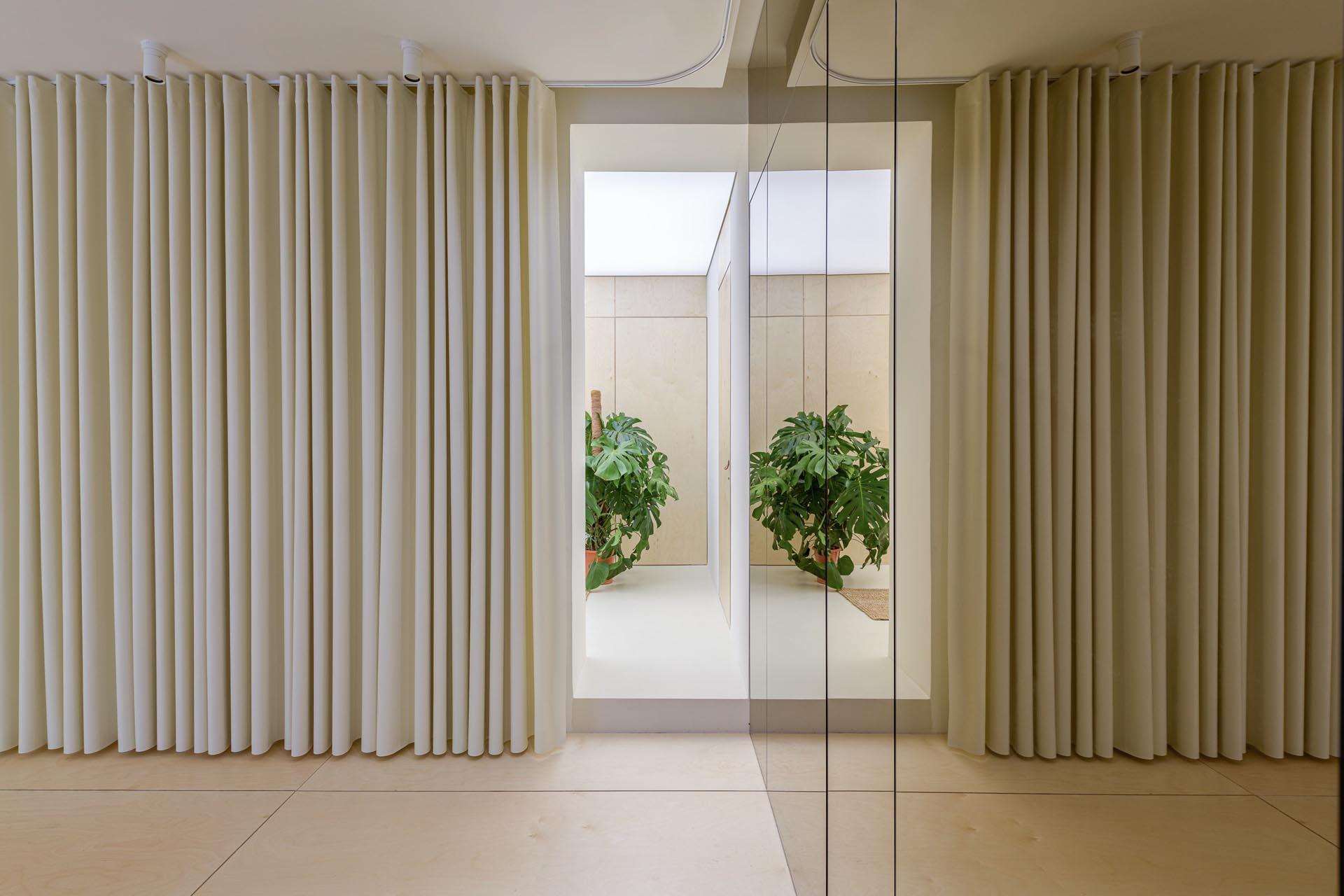
The organisation of the entire centre revolves around the necessity for flexibility and adaptability, and so the architects proposed design solutions such as storage compartments hidden behind bronze mirror walls and continuous curtains in off-white vegan leather wrapping the main saloon, to enable the centre to transform into multiple configurations suited for a variety of activities.

“Too often art galleries, exhibition spaces and cultural centres tend to be very generic, at times sterile, as if the only way to address adaptability is through non-specific design,” Bavuso states. “We love art, and we spend a great amount of our time visiting art spaces. We knew that creating a generic and neutral mood that could accommodate a variety of programmes would not be stimulating, so we decided that the space had to be able to evoke different emotions, based on the function occurring at that given moment.”

From a wider perspective, the cultural centre aims to prompt discussions around more conscious ways of building the spaces we inhabit, which is directly in tune with the practice’s mission to employ architecture as a tool to stimulate an uncluttered and balanced way of living by offering smart design solutions that invite the user to reflect on what is truly essential for our well-being.
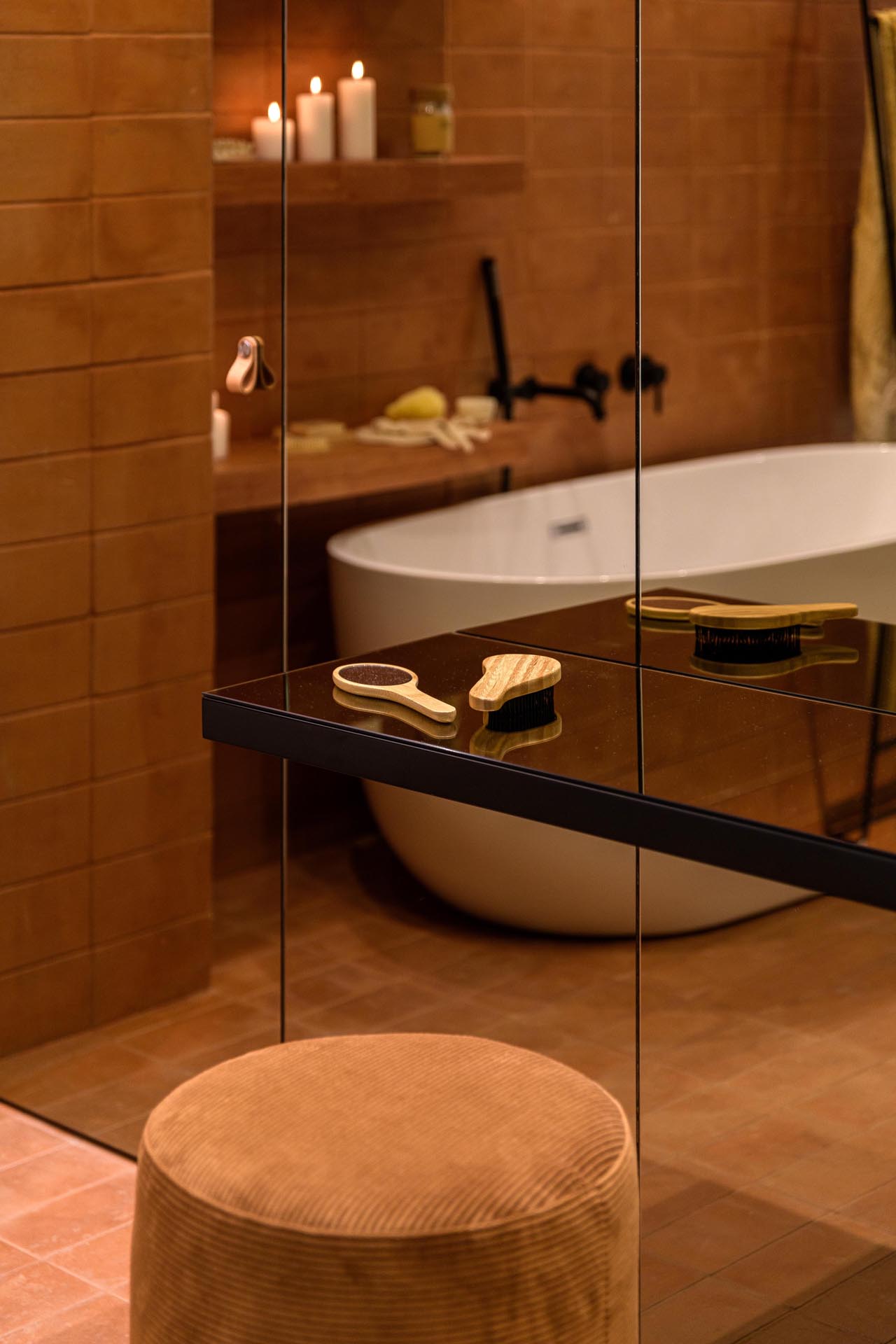
“Cultural and artistic spaces should do more than just fulfil the requirements of the brief or be containers where art and culture is displayed,” Bavuso says. “These spaces should stimulate people and allow them to connect with the culture and art. The beauty of the space should not just be seen, it should also be felt.”
Read more features here
The Latest
A New Standard in Coastal Luxury
La Perla redefines seaside living with hand-crafted interiors and timeless architecture
Things to Covet
Here are some stunning, locally designed products that have caught our eye
An Urban Wadi
Designed by Dutch architects Mecanoo, this new museum’s design echoes natural rock formations
Studio 971 Relaunches Its Sheikh Zayed Showroom
The showroom reopens as a refined, contemporary destination celebrating Italian craftsmanship, innovation, and timeless design.
Making Space
This book reclaims the narrative of women in interior design
How Eywa’s design execution is both challenging and exceptional
Mihir Sanganee, Chief Strategy Officer and Co-Founder at Designsmith shares the journey behind shaping the interior fitout of this regenerative design project
Design Take: MEI by 4SPACE
Where heritage meets modern design.
The Choreographer of Letters
Taking place at the Bassam Freiha Art Foundation until 25 January 2026, this landmark exhibition features Nja Mahdaoui, one of the most influential figures in Arab modern art
A Home Away from Home
This home, designed by Blush International at the Atlantis The Royal Residences, perfectly balances practicality and beauty
Design Take: China Tang Dubai
Heritage aesthetics redefined through scale, texture, and vision.
Dubai Design Week: A Retrospective
The identity team were actively involved in Dubai Design Week and Downtown Design, capturing collaborations and taking part in key dialogues with the industry. Here’s an overview.
Highlights of Cairo Design Week 2025
Art, architecture, and culture shaped up this year's Cairo Design Week.

